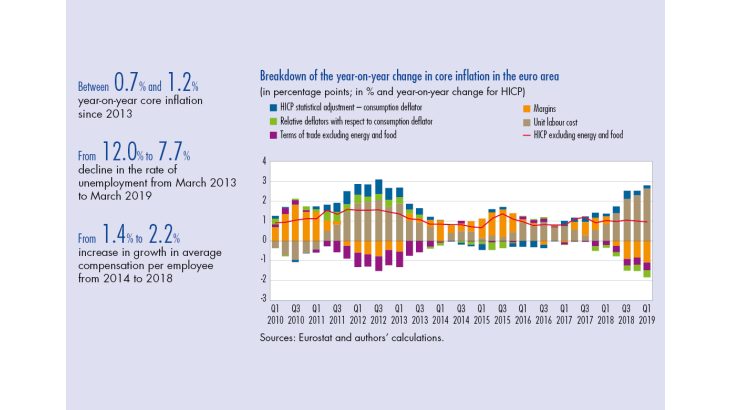Why have strong wage dynamics not pushed up inflation in the euro area?
Bulletin n°225, article 6. The recent weak core inflation in the euro area, despite a steady decline in unemployment since 2013, has led some analysts to doubt the existence of a Phillips curve. Wage developments, however, are consistent with their historical relationship with unemployment. This article proposes a novel decomposition of core inflation to explain the apparent absence of transmission of labour cost to inflation since 2017. We show that the increase in labour costs has been offset by a decrease in the margin rate and an improvement in the terms of trade excluding energy and food on the back of the appreciation of the euro. An increase in the price of construction investment relative to the price of consumption has also contributed to the apparent disconnection between labour cost and inflation: the dynamism of domestic prices thus concerns the price of construction more than that of consumption.
